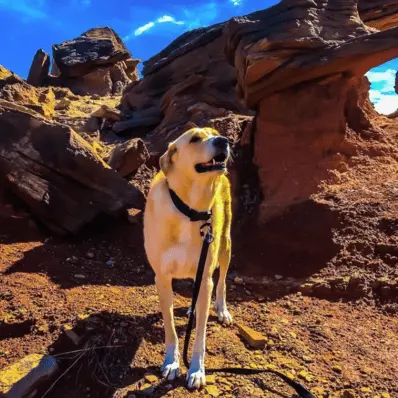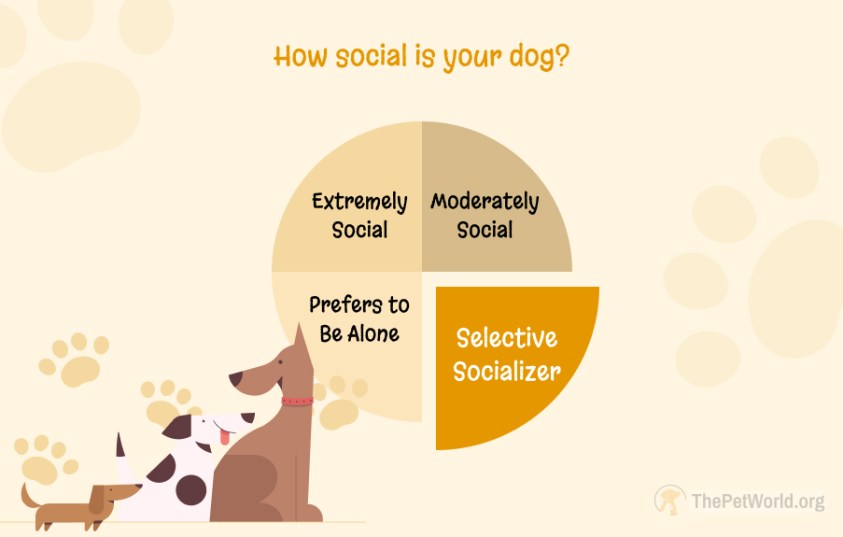Anatolian Shepherd Dog History/Origin
The Anatolian shepherds are livestock guardian dog, originating from the Anatolian region of Turkey. These dogs have been around for thousands of years, protecting sheep, goats, and other livestock and shepherds from predators.
Known locally as “Coban kopegi,” which means “shepherd dog” in Turkish, they were bred to be swift and strong, capable of covering large distances to protect livestock. The Central Asian Shepherd Dog has similar traits, making it a great choice for those needing a strong, protective livestock guardian.
The Anatolian Shepherd Dog’s ancestry is a mix of mastiff-type dogs from central Asia and sighthound guardian breeds from the south. This combination results in a unique set of traits. These traits include agility, long legs, and a reserved demeanor. Living in the rugged terrain of Anatolia, these purebred dogs adapted to their environment. They became skilled protectors.
In Turkey, this dog breed was selectively bred for their working and protective instincts, with only the best dogs being chosen to continue the lineage. These dogs were tough, often having to hunt for their food while still ensuring the safety of the livestock they guarded. Iron collars with long spikes were commonly used to protect them from potential threats.
In the 1970s, interest in Anatolian Shepherds grew in the United States, thanks to enthusiasts like Robert Ballard, who introduced them to the country.
The formation of the Anatolian Shepherd Dog Club of America occurred in 1970. This event marked a turning point for the breed. It led to the breed’s recognition by organizations like the American Kennel Club under the Working Group.
Today, they are valued as a working breed and beloved companions, known for their loyalty and protective nature.
Anatolian Shepherd Dog Personality
The Anatolian Shepherd is known for its protectiveness and loyalty. While they are loving towards their family and familiar faces, they can be wary of strangers due to their instincts as guardians.
In a home environment, Anatolian Shepherds require patient and consistent training. Along with that, proper socialization from a young age helps them adapt to different situations and people.
With the right approach, every dog breed can become loyal and devoted companions, offering protection and companionship to their families.
- Temperament
The Anatolian Shepherd Dog possesses a steady and composed temperament. Confident and self-assured, they are fiercely loyal to their family members. This characteristic makes them excellent watchdogs.
Shaped by their working heritage, Anatolian Shepherds are independent thinkers, relied upon to make independent decisions to protect their flocks. This independence can sometimes show stubbornness, requiring patience from their owners.
Despite their imposing size and protective instincts, they are gentle and affectionate with those they know well. They are generally good with children, although supervision is recommended due to their large size.
However, with proper socialization and training, Anatolian Shepherds can become well-mannered and trustworthy companions.
- Behavioral Considerations and Training Needs
Anatolian Shepherds are known for their protective nature and independence, which can present training challenges. Early socialization and obedience training are crucial to curbing overprotective tendencies and establishing boundaries. Regular exercise and mental stimulation are necessary to prevent boredom-induced destructive behaviors.
Proper socialization helps them develop good manners and confidence. Anatolian Shepherds can be protective of their space, sometimes showing aggression towards strangers or other dogs. It’s important to keep training them regularly and seek help from professionals if needed to manage this behavior well.
Anatolian Shepherd Physical Appearance
Anatolian Shepherds are strikingly large and robust dogs, with males typically exhibiting more muscularity and size than females.
Anatolian Shepherds possess other distinct physical characteristics, including a broad head with a strong muzzle and alert almond-shaped eyes. Their ears are V-shaped and hang close to their cheeks. These physical characteristics contribute to their distinct appearance as confident and vigilant dogs.
- Anatolian Shepherd Size
Anatolian Shepherds are large to giant dogs, with males reaching heights between 28 to 30 inches at the shoulder, while females typically measure slightly shorter, standing between 26 to 28 inches. Their sturdy bodies are well-proportioned, conveying an impression of strength and agility.
- Coat Color
One of the most noticeable features of Anatolian Shepherds is their coat, which comes in various colors such as brindle, white biscuit, or pinto. The most common Anatolian Shepherd color is fawn with a black mask.
Brindle Anatolian Shepherd- source: AKC.org
White Anatolian Shepherd- source: anatolian_shepherd_dogs
Pinto Anatolian Shepherd- source: anatolian_shepherd_dogs
Their double coat consists of a dense undercoat and a longer outer coat, providing insulation and protection from the elements.
This coat is particularly advantageous for their traditional role as outdoor guardians, allowing them to withstand harsh weather conditions with ease.
Anatolian Shepherds and Kangals are often confused due to their similar appearance and shared heritage. While both breeds originated in Turkey and have similar physical traits, they have subtle differences.
Here is an overview of Anatolian Shepherd vs. Kangal dogs:
| Feature | Anatolian Shepherds | Kangals |
| Origin | Turkey | Turkey |
| Purpose | Livestock guardianship | Livestock guardianship |
| Size | Typically leaner build | Heavier bone structure |
| Head | Broad head with less substantial size | Larger head |
| Temperament | May exhibit a more independent nature | Often more territorial and protective |
| Coat Color | Various, including fawn, brindle, and pinto | Predominantly fawn with black mask |
| Ear Shape | V-shaped ears that hang close to cheeks | Drop ears that are often erect |
| Trainability | Intelligent and trainable | Intelligent and trainable |
| Loyalty | Loyal to their family and flock | Loyal and protective of their territory |
Anatolian Shepherd Gender Differences
While mostly the differences between male and female Anatolian Shepherds vary with their breeding and heritage, these are some common differences:
- Size
Male Anatolian Shepherds typically have a larger build than females.
On average, male Anatolian Shepherds stand between 28 to 30 inches tall at the shoulder and weigh between 110 to 150 pounds. Females, on the other hand, are slightly smaller, typically measuring between 26 to 28 inches tall and weighing between 80 to 120 pounds.
- Temperament
In terms of temperament, male Anatolian Shepherds tend to display more dominant behavior compared to females. They may exhibit stronger protective instincts and assertiveness, particularly when it comes to guarding their territory or family.
Whereas, females are more caring and better suited for a household with children.
Anatolian Shepherd Feed/Nutrition
Anatolian Shepherds require a balanced diet to support their size and activity level.
It is recommended to give them high-quality dog food meant for large breeds, along with regular feeding schedules to prevent obesity.
Since they are active working dogs, it’s important to provide them with sufficient nutrients to maintain their energy levels. Monitoring their weight and adjusting their diet accordingly is crucial for their overall health and well-being.
You can also include oranges, shrimp, and cucumbers as occasional treats, but always in moderation to avoid digestive upset.
Additionally, consulting with a veterinarian can help ensure that their nutritional needs are being met adequately.
Anatolian Shepherd Health Problems
Like all breeds, Anatolian Shepherds are prone to certain health issues, including hip dysplasia, bloat, and certain genetic conditions.
- Hip and Elbow Dysplasia: Anatolian Shepherds are predisposed to hip dysplasia and elbow dysplasia, which are developmental conditions affecting the joints. These disorders result in abnormal formation or growth of the hip or elbow joints, leading to discomfort, lameness, and arthritis. Management typically involves weight control, exercise moderation, and surgical intervention in severe cases.
- Demodectic Mange: This breed is susceptible to demodectic mange, a skin condition caused by the overgrowth of Demodex mites in hair follicles. Symptoms include hair loss, skin inflammation, and sometimes secondary bacterial infections.
- Hypothyroidism: This breed is prone to hypothyroidism, a condition characterized by inadequate thyroid hormone production. Common symptoms include weight gain, lethargy, hair loss, and skin problems. Management typically involves lifelong thyroid hormone supplementation to regulate hormone levels and alleviate symptoms.
- Entropion: Entropion is a condition where the eyelid rolls inward, causing irritation and potentially damaging the cornea. Anatolian Shepherds may be predisposed to this condition, leading to discomfort, excessive tearing, and vision impairment. Surgical correction is often necessary to reposition the eyelid and prevent further complications.
Regular vet check-ups, a healthy diet, and proper exercise can help maintain their overall well-being.
Anatolian Shepherd Care and Grooming
Anatolian Shepherds, despite their thick coat, have relatively low grooming needs compared to some other breeds. Weekly brushing is sufficient to remove loose fur and prevent matting, keeping their coat healthy and shiny.
However, it’s important to note that they undergo heavy shedding twice a year. During this period, they require frequent brushing to remove any loose hair.
In addition to brushing, regular maintenance tasks such as nail trimming, ear cleaning, and dental care are essential for their overall well-being.
Keeping their nails trimmed prevents them from becoming overgrown and uncomfortable. Regular ear cleaning helps prevent ear infections. Dental care, including regular brushing and dental chews, can help maintain their oral health and prevent dental issues.
Furthermore, regular vet check-ups are crucial to monitor their health and catch any potential issues early on. This includes vaccinations, parasite prevention, and overall health assessments.
Additionally, leash training your dog is essential for safe and enjoyable walks, ensuring your dog remains controlled and calm in public spaces.
Anatolian Shepherd Price
The price of an Anatolian Shepherd ranges from $500 to $2,000, depending on the breeder, lineage, and location.
If you’re considering adding an Anatolian Shepherd to your family, it’s essential to research reputable breeders who prioritize the health and well-being of their dogs.
Anatolian Shepherd Rescue Groups
If you’re considering Anatolian Shepherd adoption, there are several rescue groups dedicated to providing a second chance for dogs in need of a loving home.
Interesting Facts
- The Turks did not export Anatolian Shepherd Dogs until the 20th century due to their perceived value.
- The first Anatolian Shepherd Dogs likely came to the United States in the late 1930s as part of a government project.
- Anatolian Shepherd Dogs are used in America to protect endangered species, such as cheetahs in Namibia.
- They have appeared in various films, including “Cats and Dogs” and “Friends With Benefits.”
Best For
Anatolian Shepherds thrive in active homes with space to roam, whether protecting their family or participating in dog sports like agility or obedience.
Top Names
| Male Anatolian Shepherd Names | Female Anatolian Shepherd Names |
| Cipher | Esra |
| Everest | Leyla |
| Maverick | Nova |
| Orion | Seraphina |
| Rogue | Zephyr |











 Brindle Anatolian Shepherd- source:
Brindle Anatolian Shepherd- source:  White Anatolian Shepherd- source:
White Anatolian Shepherd- source:  Pinto Anatolian Shepherd- source:
Pinto Anatolian Shepherd- source:  White Anatolian Shepherds- Source:
White Anatolian Shepherds- Source:  Kangal, Source:
Kangal, Source: 







